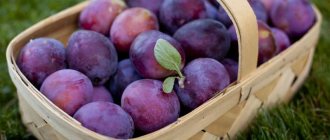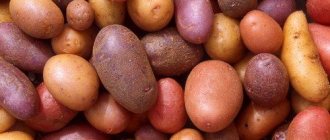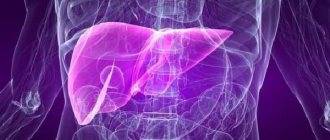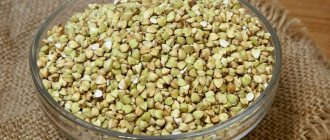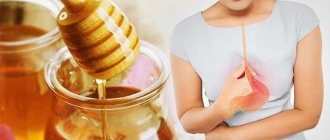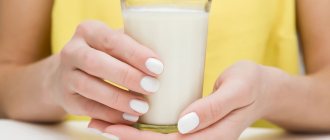Today, on the shelves of specialized stores there are seafood delicacies for every taste, valuable for gourmets. Dishes prepared from seafood are included in the menus of expensive, top-class restaurants, and every housewife tries to surprise guests by placing exotic treats made from shrimp, squid or crabs on the festive table.
Nutritionists have not ignored the protein-rich product. Doctors strongly recommend including seafood in the diet of people suffering from obesity, disorders of the cardiovascular system, and diseases of the musculoskeletal system and respiratory tract. Eating seafood helps strengthen the immune system and increase vitality.
Let's consider the question of a therapeutic diet for people suffering from diseases of the digestive system, whether it is allowed to include seafood in the diet for pancreatitis.
When is it possible
To answer this question, it is necessary to clarify the form of pancreatitis at the moment. In the acute stage, the patient is contraindicated in foods that are difficult to digest by the digestive system. Crustacean meat has a dense structure, which is considered heavy food at the time of exacerbation of pancreatitis. Therefore, in case of acute pancreatitis, it is better to avoid dishes containing shrimp meat.
During the period of remission, when the list of permitted products is quite wide, it’s time to remember shrimp. They not only decorate the table, but also contain a lot of useful trace elements and minerals: phosphorus, calcium, iron, vitamins PP, C, E.
It is especially worth noting the high content of iodine and acids in these seafood delicacies, which help remove cholesterol from the body. Taurine contained in shrimp helps improve vision and elasticity of blood vessels.
With chronic inflammation of the pancreas, the tissues of the organ are in great need of protein of natural origin. After an exacerbation, it is better to eat seafood in pureed form, so it is easier for the stomach to digest them. If the remission lasts quite a long time, the shrimp meat can not be chopped and eaten whole. Consumption of shrimp should not exceed 350 grams in one day, otherwise all the benefits of the product will result in negative consequences.
Seafood – what is it and how is it useful?
For most residents of the CIS countries, the product is considered more exotic than ordinary. Nutritionists recommend periodically including it in the menu. Seafood has a pleasant taste and many beneficial properties.
This includes crustaceans, mollusks and algae. Shrimp, squid and kelp are popular products; packages of products are easy to find on store shelves.
Seaweed
Seaweed is beneficial for the human body:
- Filled with vitamins A, B, C, D, E, R, PP and microelements, with a high percentage of iodine;
- Contains phytohormones and amino acids.
Including seafood in your diet helps:
- strengthening the cardiovascular system and improving metabolism;
- removal of toxins and heavy metal salts from the body;
- antibacterial protection of the body;
- improving the functioning of the thyroid gland.
Having many unique properties, seaweed is used in cosmetology, cooking, medicine, thalassotherapy and dietetics.
Shellfish
A group of dietary products, exotic and expensive. The most famous and popular are mussels, squid and rapana, which have exquisite taste and a lot of useful properties:
- A large percentage of B vitamins, especially vitamin B12, helps improve metabolism and brain function, strengthen blood vessels and heart muscle.
- The presence of Omega-3 and Omega-6 polyunsaturated fatty acids, due to which shellfish are considered cardioprotectors, reduces the risk of arrhythmia and regulates cholesterol levels in the blood.
- The variety of microelements in the product includes iron, phosphorus, zinc, manganese, selenium and folate. Manganese helps strengthen bones, selenium protects against malignant tumors and neutralizes carcinogenic substances.
- High dietary protein content. The content of mussels is not inferior to beef; marine life contains less saturated fat.
However, mollusks pick up sewage from the bottom of reservoirs, eat toxic algae, and can cause poisoning in the person who eats the product.
Crustaceans
A common group of seafood, used in cooking. The meat of aquatic inhabitants is tender and exhibits a unique taste. Crustacean meat is considered a valuable dietary product due to:
- Contains vitamin A, which is beneficial for vision; valuable vitamin B12, rarely found in other products; vitamin D, which prevents the development of rickets in children; vitamins C, E, PP.
- The presence of easily digestible protein, useful for the restoration of damaged tissues of internal organs, including the pancreas.
- Variety of microelements. There will be magnesium, calcium, potassium, iron, phosphorus, fluorine, copper, selenium, zinc, chromium.
- The volumetric content of iodine necessary for the health of the thyroid gland.
- Availability of amino acids.
- High content of Omega-3 and Omega-6, which normalize the level of fat-containing elements in the blood.
- The presence of taurine, which helps improve vision and increase vascular elasticity.
Similar to mollusks, crustaceans are marine “scavengers”; they absorb heavy metal salts and radioactive substances.
Shrimp puree soup.
To prepare this delicious soup you will need:
- Milk 300 gr.
- Water 200 gr.
- About 10 medium-sized shrimp
- Potatoes 1-2 pieces
- Zucchini 150 gr.
- Salt
Preparation:
- First of all, you need to prepare the vegetables. The zucchini is peeled and grated on a coarse grater.
- Potatoes also need to be peeled and grated.
- Next, you need to prepare the shrimp, which come in peeled and unpeeled form.
- Unpeeled frozen seafood that needs to be poured with boiling water for a couple of minutes, then cooled and peeled.
- Ready seafood must be minced or blended.
- When all the ingredients are prepared, you need to take a saucepan, mix milk and water in it and bring to a boil.
- Next, add the prepared vegetables to the boiling mixture and cook for about 15 minutes.
- After the vegetables are cooked, add shrimp to the pan and cook the soup for another 5 minutes.
- The finished dish can be served with crackers and herbs.
To prepare main courses, you can use shrimp in combination with boiled vegetables. Seafood goes well with potatoes, carrots, zucchini, cauliflower and broccoli. For the festive table, you can prepare julienne.
Can seafood be included in the diet for pancreatitis?
People suffering from pancreatic disease spend most of their lives on a gentle diet and carefully consider their diet. Sometimes you have to give up healthy foods that are available to other people. Seafood is a healthy and tasty product, shrimp is especially favorite. Is it allowed to include shrimp in the menu if you have pancreatitis?
Gastroenterologists give a positive answer; when consuming it, you should adhere to certain rules.
Seafood and acute pancreatitis
In the phase of acute pancreatitis, the pancreas is inflamed; in the first few days after the attack, a person is fed by intravenous solutions and medications. Then the patient is transferred to a gentle diet, excluding mechanical, thermal and chemical effects on the pancreas.
Shrimp and other seafood contain easily digestible protein and a lot of useful elements; they have a dense structure, thanks to the chitin included in the composition. Animals, like a sponge, absorb heavy metal salts and radioactive substances, becoming dangerous for an organism weakened by disease. In the first two months after an attack of pancreatitis, seafood, including shrimp, should not be consumed.
Seafood and chronic pancreatitis
People suffering from chronic pancreatitis must constantly monitor their diet; an unexpected mistake in nutrition will lead to an exacerbation of the disease. Sometimes it is not possible to avoid mistakes, and the unpleasant symptoms of the disease appear with force.
During an exacerbation of chronic pancreatitis, gentle dietary nutrition is prescribed, as in acute pancreatitis. Seafood should be avoided. After the symptoms of exacerbation disappear, adding shrimp meat to other dishes is allowed by doctors, steamed and thoroughly ground.
During remission, there is no need for mechanical sparing of the pancreas. You should eat shrimp, mussels, and kelp; they are a storehouse of useful vitamins and microelements and help restore the body after illness. Protein from shellfish and crustaceans is easier to digest than meat and helps restore damaged pancreatic tissue. The fat content in the meat of sea creatures is lower than in poultry meat.
People suffering from chronic pancreatitis need to remember the following rules:
- Seafood must be of exceptional quality. There should be no black or yellow spots on the limbs of shrimp, indicating unsuitability.
- Smoked and marinated seafood should not be consumed by people suffering from chronic pancreatitis.
- The daily intake of shrimp during the period of stable remission is 350 grams.
In the absence of symptoms of the disease, seafood and shrimp are allowed to be consumed in their natural (not pureed) form. It is preferable to steam, stew or bake, add to soups or omelettes. There are many recipes for healthy and tasty dishes that can easily diversify the meager dietary menu of a person suffering from chronic pancreatic disease.
Shrimp and chronic pancreatitis
During the rehabilitation phase of pancreatitis, the body really needs dietary protein, which is necessary for better restoration of gland tissue, balanced production of pancreatic enzymes and their inhibitors, and counteracting sclerotic changes. It is desirable that up to 60% of the protein is of animal origin. Therefore, shrimp protein is very appropriate, and they themselves are able to decorate the diet of a boring diet.
Outside of exacerbation of pancreatitis, shrimp are no longer allowed to be wiped. They are successfully used in a wide variety of salads, cereals, cream soups, side dishes with vegetables or cereals, and paella. In addition to boiling, shrimp can be stewed and baked. In addition to the properties mentioned, these seafood:
- provide the body with iodine (110 mcg per 100 g) and fluoride (100 mcg per 100 g);
- rich in taurine - an amino acid that maintains elasticity and sufficient tone of blood vessels and muscles, nourishing the cornea, retina and eye muscles;
- low in calories.
Shrimp during long-term remission
During a persistent decrease in the symptoms of the disease and the absence of acute moments, the shrimp do not have to be chopped - it is enough to boil, stew or bake well, or include them in salads, side dishes and soups.
If the functioning of the pancreas is confidently stable, and the patient himself tolerates seafood well, then you can eat no more than 300 g of shrimp meat. The protein present in it has a beneficial effect on the synthesis of enzymes and speeds up the rehabilitation period.
Patients with chronic pancreatitis also need to carefully adhere to the rules for their use:
- Use only high-quality products for food: there should be no yellow or black spots or rings on the limbs of the shrimp, which indicates freshness. Yellow areas are evidence that they tried to remove black spots using special substances. In addition, the presence of white fragments is a sign that the shrimp is severely frozen.
- Seafood from the category of smoked meats, pickles, and canned foods are strictly unacceptable for pancreatitis of the pancreas.
- When preparing seafood, you should not use sour and spicy dressings, sauces using vinegar and citric acid.
- It is forbidden to eat rolls and sushi with shrimp.
- A serving of crustaceans should not exceed 350 g.
- In the absence of clinical signs of the disease for a long time, it is allowed to eat shrimp in their natural form (without rubbing). It is recommended to give preference to cooking methods such as steaming, baking or stewing.
Benefits of shrimp
Shrimp are allowed in almost any therapeutic diet, since their meat contains little fat and protein, which is easily absorbed by the body. In addition, the product contains a lot of vitamins, as well as iodine, iron, potassium, magnesium and other trace elements that support the functioning of internal organs and muscles.
You can prepare many healthy and tasty dishes from shrimp. They can be steamed, boiled and baked, which is especially important during a diet. In addition, the calorie content of the shrimp themselves is very low.
Salad with shrimp
Cooking time – 10-15 minutes. Number of servings – 1-2.
All the products in this recipe complement each other so harmoniously that the salad turns out tasty, dietary and extremely healthy.
Products:
- 10 pieces of quail eggs;
- 1 fresh cucumber;
- 100 grams of Adyghe cheese;
- 2 tbsp. spoons of sour cream;
- 300 grams of shrimp.
Preparation:
- Prepare seafood and boil in salted water for no longer than 5 minutes.
- Grate the cheese.
- Boil the eggs, cool and chop.
- Peel the cucumber and chop on a coarse grater.
- Combine all ingredients in a salad bowl, season with mayonnaise and mix thoroughly.
The salad can be served with boiled rice and fresh herbs.
Calorie content per 100 grams – 120.24 kcal. BJU: 15.27 g, 5.58 g, 0.71 g.
Yandex pictures
Salad with seafood and vegetables
Cooking time – 15-20 minutes. Servings – 1.
This salad will help diversify the menu of a sick person and supply the body with all the necessary substances.
You will need:
- Potatoes – 3 pieces.
- Seafood – 250 gr.
- Egg – 2 pieces.
- Sour cream – 2 tbsp. spoons.
- Carrots – 1 piece.
- Salt - to taste.
Step by step recipe:
- Peel, rinse and boil the crustaceans.
- Boil potatoes and carrots and cut into cubes.
- Pass the eggs through an egg slicer.
- Place all prepared products in a dish, add salt, season with mayonnaise and mix.
Despite the simplicity of preparation, the salad turns out to be satisfying and nutritious. You can serve it as an independent dish.
Calorie content per serving – 88.15 kcal. BJU: 7.86 g, 2.55 g, 7.18 g.
Yandex pictures
How to choose seafood for pancreatic diseases?
When choosing seafood, the first thing you need to pay attention to is the fat content. In this regard, it is dangerous to purchase so-called sea cocktails, since they may contain harmful and even dangerous ingredients for patients with pancreatitis and cholecystitis.
When purchasing finished products and semi-finished products (for example, fish cutlets, crab sticks, minced fish), you need to pay close attention to the composition and nutritional value. If the product contains too high a percentage of fat or vegetable protein, it is better to refrain from purchasing. It is also important to pay attention to whether it contains any components prohibited during the diet. Battered and deep-fried shrimp can be dangerous.
It is best to buy fresh frozen fish and cook it yourself. But at the same time, it is important to pay attention to the expiration date of the product and ensure that the packaging is in presentation, and the seafood itself is not covered with yellow spots, which characterize spoiled goods or products in violation of storage conditions. Low-quality products can be detrimental to both the gallbladder and the entire digestive tract.
